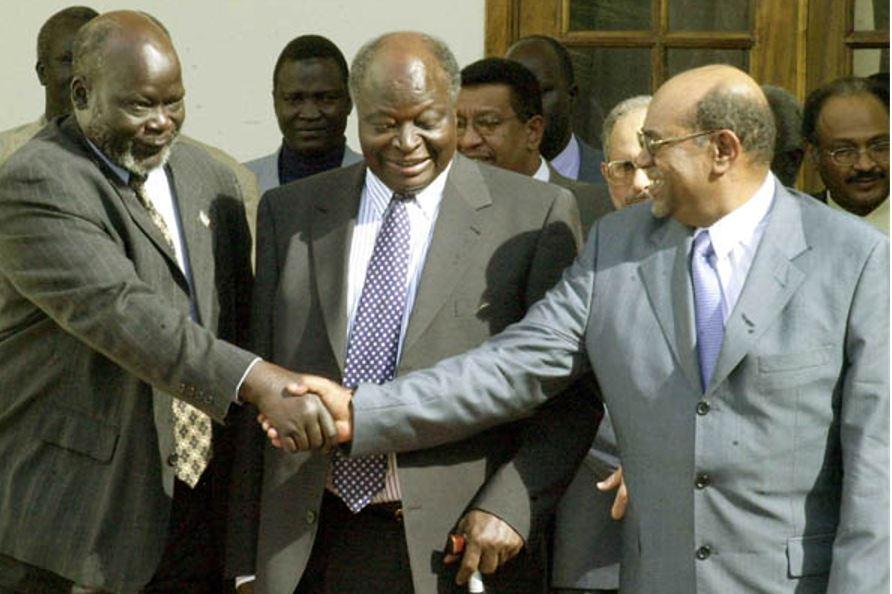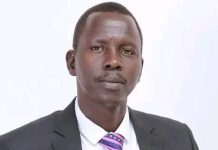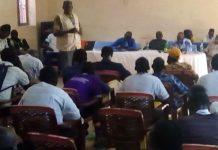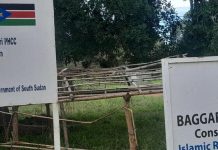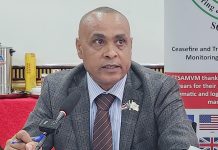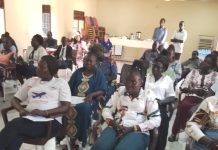Africa-Press – South-Sudan. Kenya’s third President, Mwai Kibaki, breathed his last at age 90 yesterday, throwing the country into mourning. Kenya’s President, Uhuru Kenyatta, confirmed the death in a televised address to the nation.
“As a leading figure in Kenya’s post-independence history, Mwai Kibaki earned the abiding respect and affection of the people of this nation and other nations throughout the world,” Kenyatta noted.
But closer home, here in the Republic of South Sudan, the past generations will remember vividly President Mwai Kibaki’s role in the peace process in Sudan. This marked the beginning of the journey towards the birth of Africa’s youngest country – the Republic of South Sudan – that would culminate in the 2010 referendum. Future generations will encounter this in literature.
So how does Juba mourn departed Kenya’s former President?
The signing of the Comprehensive Peace Agreement (CPA) in Nairobi on January 9, 2005, was described as “a historic moment of great opportunity for the country” by the United Nations Security Council President, Joel Adechi of Benin.
This signing, a significant step towards peace and stability not just in Sudan, but also in the entire East and Central Africa Region, happened at a time when Mwai Kibaki had slightly over two years in office as Kenya’s third president.
The CPA received wide international approval and was praised as a promising chance to end one of Africa’s longest and fiercest civil wars. Since the end of British colonialism in 1955, more than two million people have been killed, and about the same number is said to be a realistic estimate of internally displaced persons (IDPs) during the course of Sudan’s wars.
Garang’s remarks
In his speech, Sudan’s First Vice President, Dr John Garang, lauded the signed Comprehensive Peace Agreement.
“This peace agreement will change Sudan forever.” Sudan cannot and will never be the same again as this peace agreement will engulf the country in democratic and fundamental transformations, instead of being engulfed in wars as it has always been for the last 184 years – since 1821, when our country was first invaded by outside powers and exposed to the ravages of the slave trade and predatory commerce of all sorts, and since before independence from 1955 in civil wars, “he said.
The Republic of South Sudan, referred to as the youngest nation in Africa after gaining independence on July 9, 2011, became a full member of the East African Community on September 5, 2016.
In January 2010, a few months before South Sudan gained independence, Kenya’s President Mwai Kibaki held a meeting with visiting South Sudanese First Vice President Salva Kiir. This was just one of many meetings between the leaders of Kenya and South Sudan that would go beyond the country’s independence.
On this particular meeting, Kibaki reaffirmed his support for peace implementation, rehabilitation, and development in southern Sudan.
Heading a delegation from South Sudan were SPLA Affairs minister Nhial Deng Nhial, Oyai Deng Ajak, and Salva Kiir Mayardit, who paid a one-day visit to Nairobi, where he met with President Mwai Kibaki.
In a statement released by the Kenyan presidency after the meeting, the Kenyan government said it would support capacity building to ”hasten the development of Southern Sudan and the attainment of political stability in the country.
President Kibaki said that his government was giving priority to the rehabilitation of infrastructure, especially major link roads through the Nadapal border point, the construction of a modern seaport in Lamu and a rail linking Southern Sudan to Ethiopia.
In the delegation from the Kenyan side were then Prime Minister Raila Odinga, Public Service Minister Dalmas Otieno, Assistant Minister for Foreign Affairs Richard Onyonka, Head of Public Service and Secretary to the Cabinet Francis Muthaura, and other senior government officials.
LAPSSET project
Dr Garang wanted a lasting peace in Sudan, and that is why, in his speech after the signing of the Comprehensive Peace Agreement, he said:
“With this peace agreement, we have ended the longest war in Africa-#, 39 years of two wars since August 1955, out of 50 years of our independence. And if we add the 11 years of Anyanya II, then Sudan would have been at war within itself for 49 years, which is the whole of its independence period.
“With this peace agreement, the SPLM and the National Congress Party government have brought half a century of war to a dignified end – congratulations.
“With the peace agreement, he was certain that there would be no more bombs falling from the sky on innocent children and women. And instead of the cries of children and the wailing of women and the pain of the last 21 years of war, peace will bless South Sudan once more with the happy giggling of children and the enchanting ululation of women who are excited in happiness for one reason or another.’’
But there was that other aspect of development. South Sudan, which signed the CPA and gained independence while Mwai Kibaki was still the president of neighbouring Kenya, would need an elaborate infrastructure to efficiently move goods and services from South Sudan to the external markets.
The Lamu Port South Sudan Ethiopia Transport Corridor (LAPSSET) project was launched on March 2, 2012, by the governments of Kenya, Ethiopia, and South Sudan to facilitate regional trade. Uganda also recently joined the project.
President Mwai Kibaki (Kenya), Prime Minister Meles Zenawi (Ethiopia), and President Salva Kiir (South Sudan) jointly launched the Lamu Port in Mokowe-Lamu on the Indian Ocean coast.
Dubbed the most ambitious infrastructural undertaking on the continent, at an estimated cost of some $25 billion, the project would be a vital transport and economic development corridor for the region.
LAPSSET is envisaged as a bridge that will link the Indian Ocean side of the continent to the Atlantic coast, and to the north, it links into the Northern Corridor into Djibouti, Sudan, and Egypt.
The LAPSSET project comprises 32 port berths connected to the region by thousands of kilometres of new rail tracks, pipelines and a highway. This corridor will also have 3 resort cities, a number of airports, and a man-made dam (the grand dam).
The project has transformative potential for the neglected north of Kenya and for East African regional integration.
Though this is one of Kenya’s Vision 2030 flagship projects, LAPSSET benefits are set to go beyond the Kenyan borders, by opening up the entire East Africa Community for trade.
For More News And Analysis About South-Sudan Follow Africa-Press

